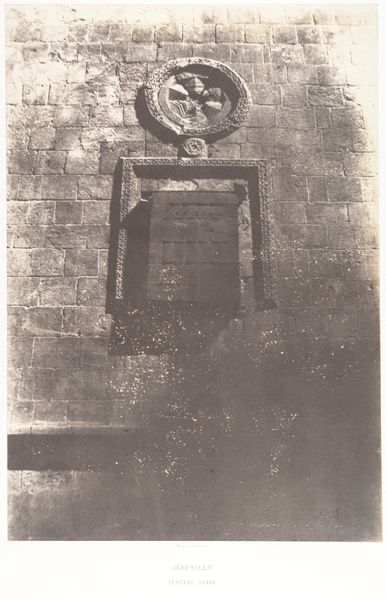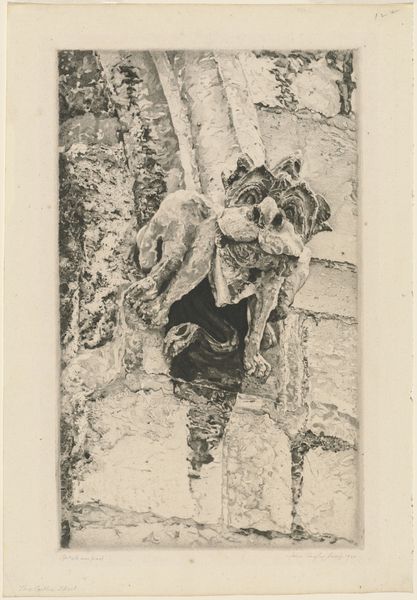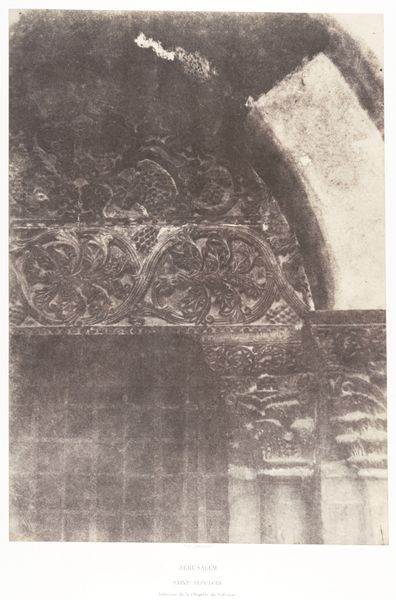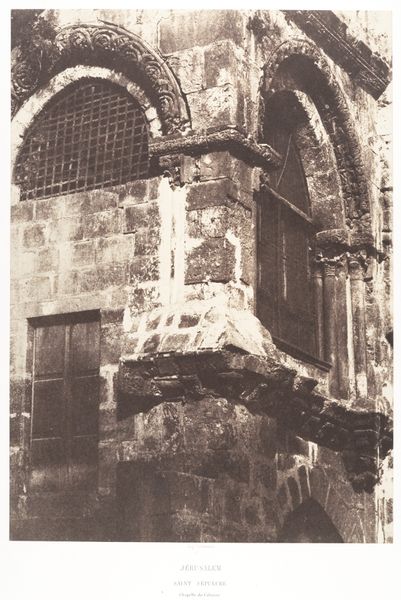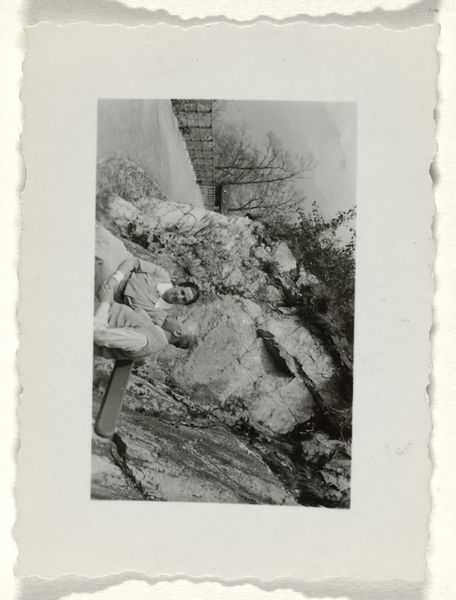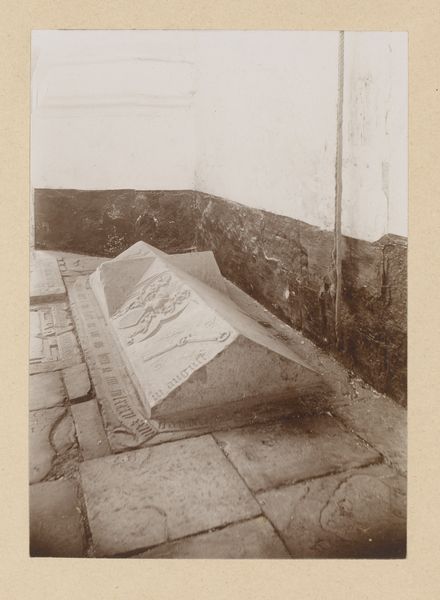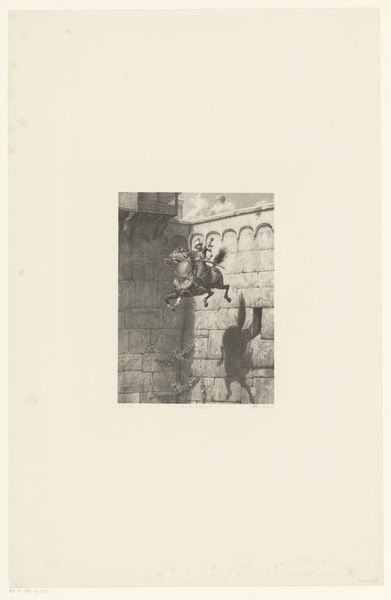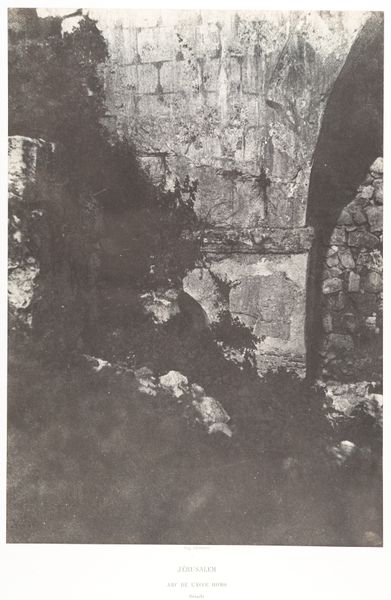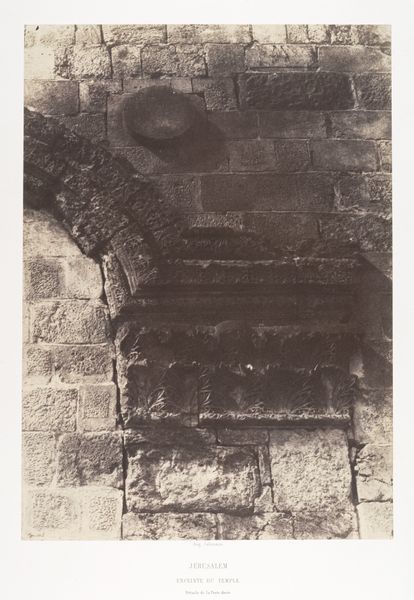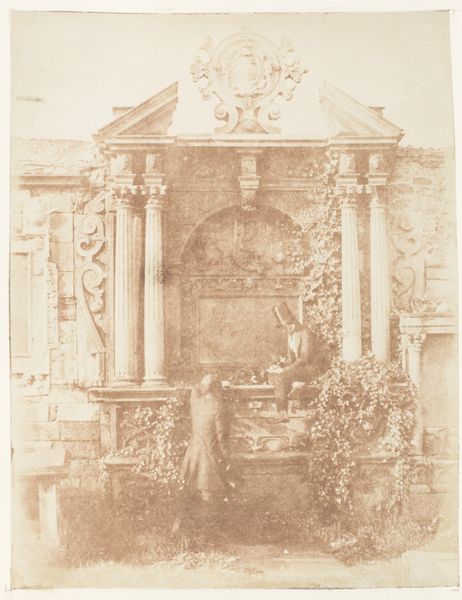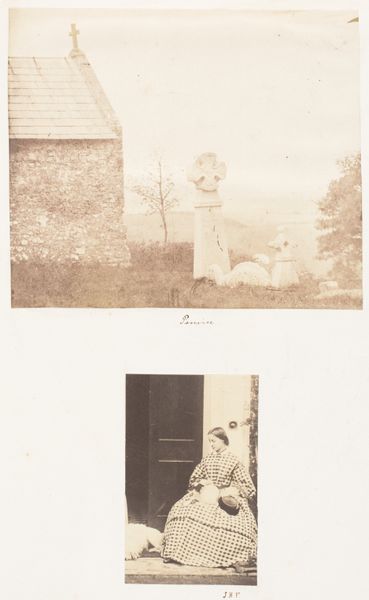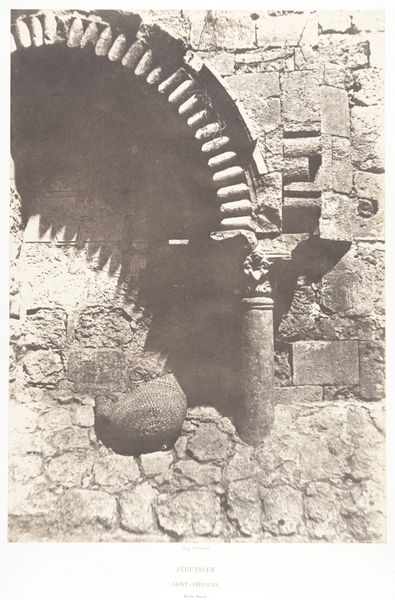
Jérusalem, Colonne de la Porte judiciaire 1854 - 1859
0:00
0:00
print, photography, architecture
# print
#
landscape
#
photography
#
ancient-mediterranean
#
architecture
Dimensions: Image: 33.2 x 23.6 cm (13 1/16 x 9 5/16 in.) Mount: 59.9 x 44.5 cm (23 9/16 x 17 1/2 in.)
Copyright: Public Domain
Editor: This photograph by Auguste Salzmann, titled "Jérusalem, Colonne de la Porte judiciaire," taken sometime between 1854 and 1859, shows a stone column next to some sort of prickly pear plant. What strikes me is the texture of the stone, almost like it’s been worn smooth over time. What do you see when you look at this piece? Curator: Well, focusing on the materiality, Salzmann's choice of the calotype process is crucial. It yielded a soft, almost painterly quality to the image, which, paradoxically, emphasizes the palpable nature of the stone and vegetation. It’s not just a photograph; it's an artifact produced through specific chemical and mechanical processes. Consider the social context too—photography at this time was being used to document and, in a way, "claim" territories and histories. How does the mode of production affect its consumption? Editor: So, the printing process itself adds another layer to its meaning. Does the contrast between the prickly plant and the man-made column factor into that? Curator: Precisely. The juxtaposition of the rough, organic texture of the vegetation against the carved, dressed stone forces us to consider human intervention on the natural world. The column speaks of labour, of quarrying and carving, while the plant represents a kind of uncontrolled growth. It becomes a document of how human labor interacts with natural materiality to mark a place like Jerusalem. What do you think that interaction tells us? Editor: I think the combination complicates the narrative. It's not a simple documentation; it's showing how time and place change what labour creates. I didn't consider the political angle before! Curator: Exactly. And the physicality of this image-- its tones and textures-- all speaks to those relationships. Editor: I’ve learned so much about how the creation and consumption of the piece influences its message! Thanks!
Comments
No comments
Be the first to comment and join the conversation on the ultimate creative platform.
